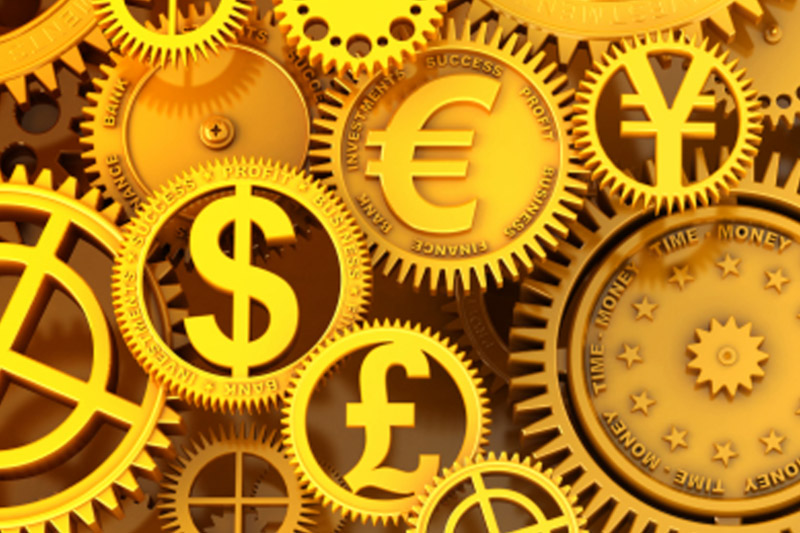Investing.com - The U.S. dollar posted strong gains against almost all of its major counterparts on Tuesday, as fresh concerns over the debt crisis in the euro zone bolstered safe haven demand.
During European morning trade, the dollar was higher against the euro, with EUR/USD tumbling 0.90% to hit 1.3733.
Sentiment on the single currency was hit by uncertainty over how a package of measures to contain the debt crisis in the euro zone, agreed on at last Thursday’s European Union summit, could be implemented.
Reports that Greek Prime Minister George Papandreou has called a referendum on the new aid package, as well surging Italian borrowing costs also weighed.
The greenback was also lower against the pound, with GBP/USD falling 0.78% to hit 1.5960.
Earlier in the day, official data showed that the U.K. economy grew slightly more-than-expected in the third quarter as the service sector expanded, but a separate report showed that manufacturing activity in the U.K. fell to a 28-month low in October.
Meanwhile, the greenback was steady against the yen as the impact of Monday’s intervention by Japan to curb the appreciation of the yen eased, with USD/JPY dipping 0.03% to hit 78.13.
Japan’s Finance Minister Jan Azumi earlier reiterated that he is ready to take appropriate action in currency markets to rein in the persistently strong yen.
The greenback posted strong gains against the Swiss franc, with USD/CHF jumping 1.26% to hit 0.8879.
Industry data showed earlier that Swiss manufacturing activity declined more-than-expected in October, contracting for the second successive month, as the slowing global recovery weighed on the sector, which has already been hit by the strong franc.
Elsewhere, the greenback was sharply higher against its Canadian, Australian and New Zealand counterparts, with USD/CAD surging 0.89% to hit 1.0096, AUD/USD falling 1.66% to hit 1.0355 and NZD/USD down 1.06% to hit 0.7979.
The Aussie’s losses came after the Reserve Bank of Australia cut its cash rate by 0.25% to 4.5% earlier, citing a moderation in the pace of global growth.
The dollar index, which tracks the performance of the greenback versus a basket of six other major currencies, advanced 0.78% to hit 77.24.
Later Tuesday, the Institute of Supply Management was to produce a report on U.S. manufacturing activity.
During European morning trade, the dollar was higher against the euro, with EUR/USD tumbling 0.90% to hit 1.3733.
Sentiment on the single currency was hit by uncertainty over how a package of measures to contain the debt crisis in the euro zone, agreed on at last Thursday’s European Union summit, could be implemented.
Reports that Greek Prime Minister George Papandreou has called a referendum on the new aid package, as well surging Italian borrowing costs also weighed.
The greenback was also lower against the pound, with GBP/USD falling 0.78% to hit 1.5960.
Earlier in the day, official data showed that the U.K. economy grew slightly more-than-expected in the third quarter as the service sector expanded, but a separate report showed that manufacturing activity in the U.K. fell to a 28-month low in October.
Meanwhile, the greenback was steady against the yen as the impact of Monday’s intervention by Japan to curb the appreciation of the yen eased, with USD/JPY dipping 0.03% to hit 78.13.
Japan’s Finance Minister Jan Azumi earlier reiterated that he is ready to take appropriate action in currency markets to rein in the persistently strong yen.
The greenback posted strong gains against the Swiss franc, with USD/CHF jumping 1.26% to hit 0.8879.
Industry data showed earlier that Swiss manufacturing activity declined more-than-expected in October, contracting for the second successive month, as the slowing global recovery weighed on the sector, which has already been hit by the strong franc.
Elsewhere, the greenback was sharply higher against its Canadian, Australian and New Zealand counterparts, with USD/CAD surging 0.89% to hit 1.0096, AUD/USD falling 1.66% to hit 1.0355 and NZD/USD down 1.06% to hit 0.7979.
The Aussie’s losses came after the Reserve Bank of Australia cut its cash rate by 0.25% to 4.5% earlier, citing a moderation in the pace of global growth.
The dollar index, which tracks the performance of the greenback versus a basket of six other major currencies, advanced 0.78% to hit 77.24.
Later Tuesday, the Institute of Supply Management was to produce a report on U.S. manufacturing activity.
